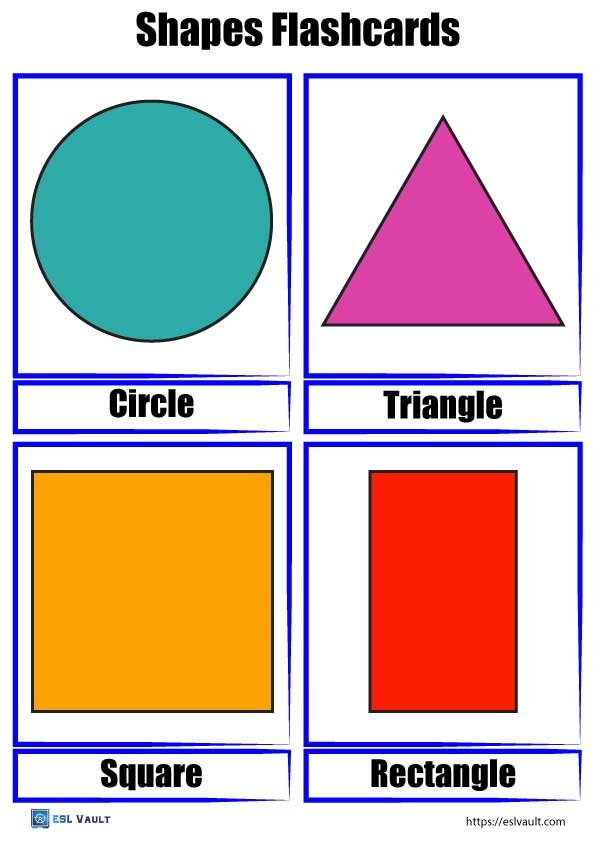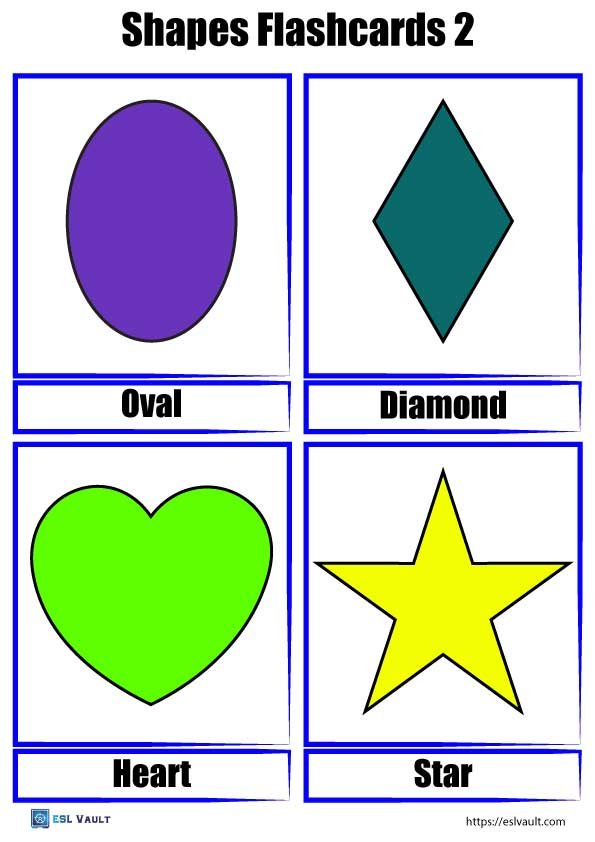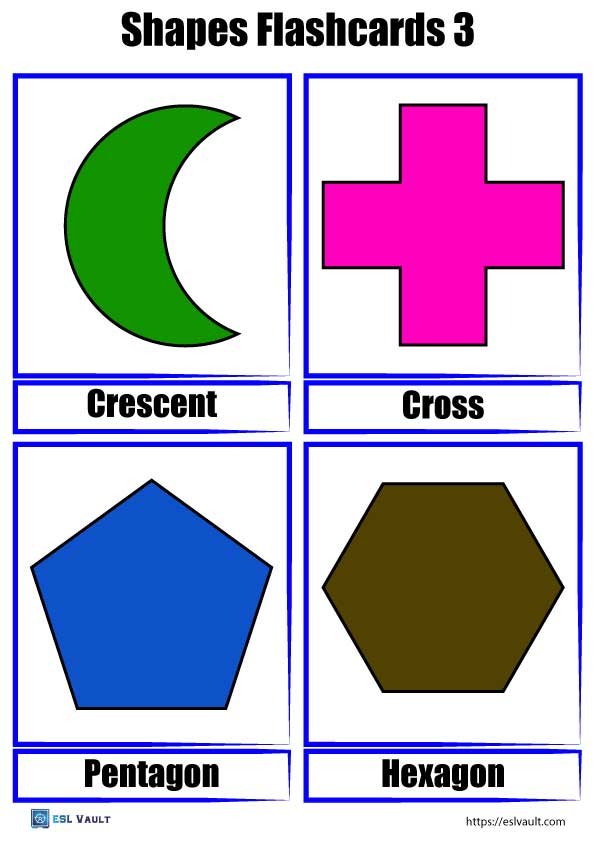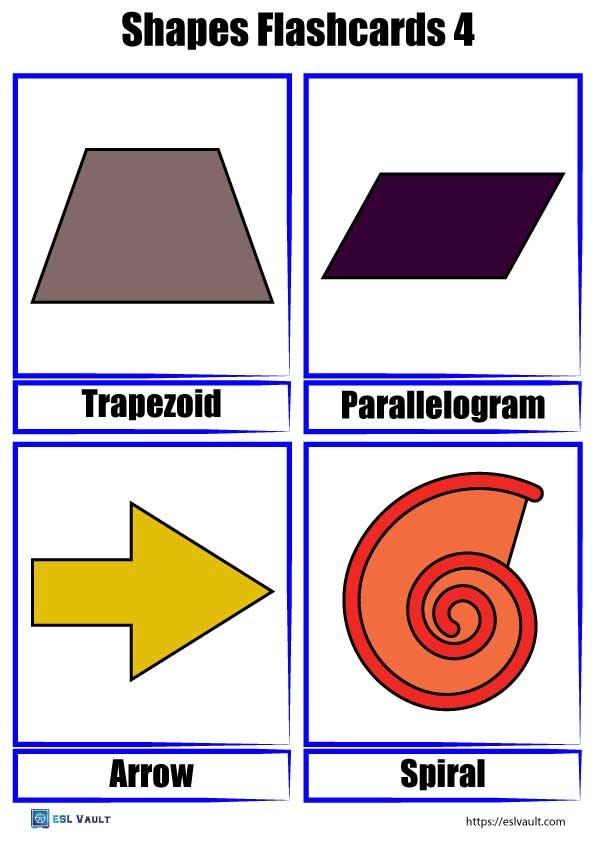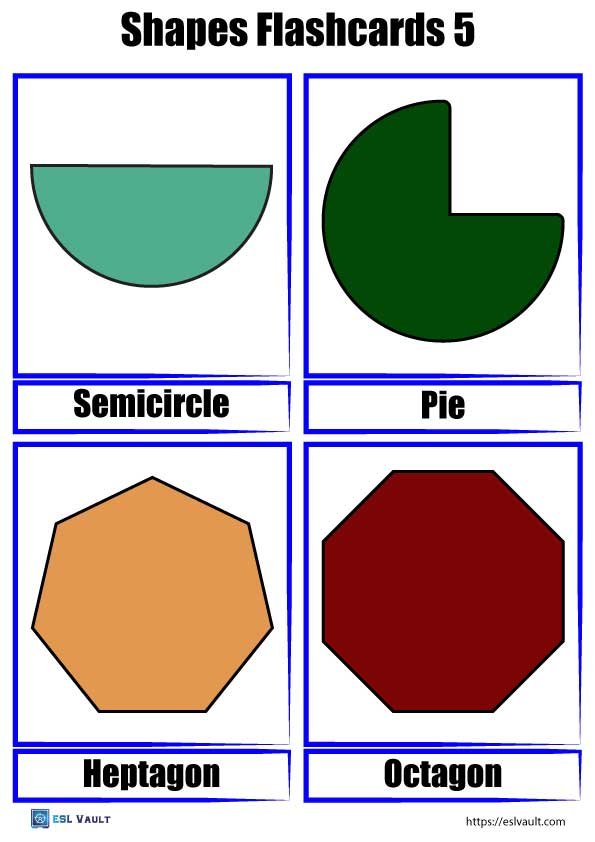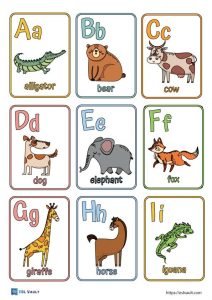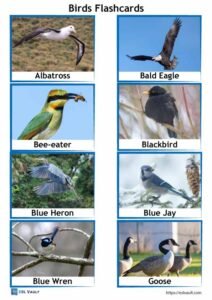Shapes flashcards
These free printable shapes flashcards are perfect for elementary ESL students and younger learners. All you need to do is download and print the PDF pages, cut them out and you are ready to go.
The pages start out with the most basic 2D shapes and progress to more challenging ones on pages 4 and 5. Each of the shapes are colored which can also be useful for extra teaching ideas. Be sure to check out some of the suggestions below.
The 20 shapes included on these flashcards are – oval, diamond, heart, star, crescent, cross, pentagon, hexagon, trapezoid, parallelogram, arrow, spiral, semicircle, pie, heptagon, and octagon.
It should be noted that some shapes have more than one name. The diamond shape can also be a rhombus as so can a parallelogram at times. An oval can be also called an ellipse (although an ellipse must be symmetrical). Finally, the trapezoid is the name used in the US whereas in the UK it is more commonly known as a trapezium.
Ideas for using the free shapes flashcards printables
There are a ton of ways to use these PDF flashcards of shapes. Here are some teaching ideas that you may not have thought of or tried before.
1 – Matching. The cards are designed so that the words can easily be cut out as separate pieces. This way you can get students to match the shapes with their names.
2- Color sentences. The shapes flashcards all have different colors, this way you can also involve colors in your lessons. One way is to get students to name the color of the shape to make basic sentences. For example, if you ask “What is it?”, students should reply with answers such as “It is a green heart” and so on.
3 – This and that. By having two cards, one close to the student and another a little away you can introduce the grammatical principles of this and that very easily. Point to the close card and ask “What is this” and the distant card and ask “What is that?”. You can go even further by using several cards and introducing these and those!
4 – Counting. You can ask students how many sides each shape has. You can also use multiple cards or print extra sets to be used for counting.
5 – Find a shape. This works well with the most simple shapes. Ask your class to find things in the room that are a certain shape. They can also just think of something and respond. For example, “A door is a rectangle” or “The moon is a circle”. Older or more advanced classes can write a list of objects for each shape (this can also be made into a race or game).
6 – Make shapes. This is a great hands-on activity for kids. By using drinking straws or matchsticks, get them to create the shapes that they are learning.
Further shapes activities
For young learners you will definitely want to have a look at the shape matching game which can also double as a cut and paste craft activity. Young children will almost certainly the shadow matching cards as well.
To take learners to the next level you can try the 3D shapes flashcards which involve much more complex vocabulary.

